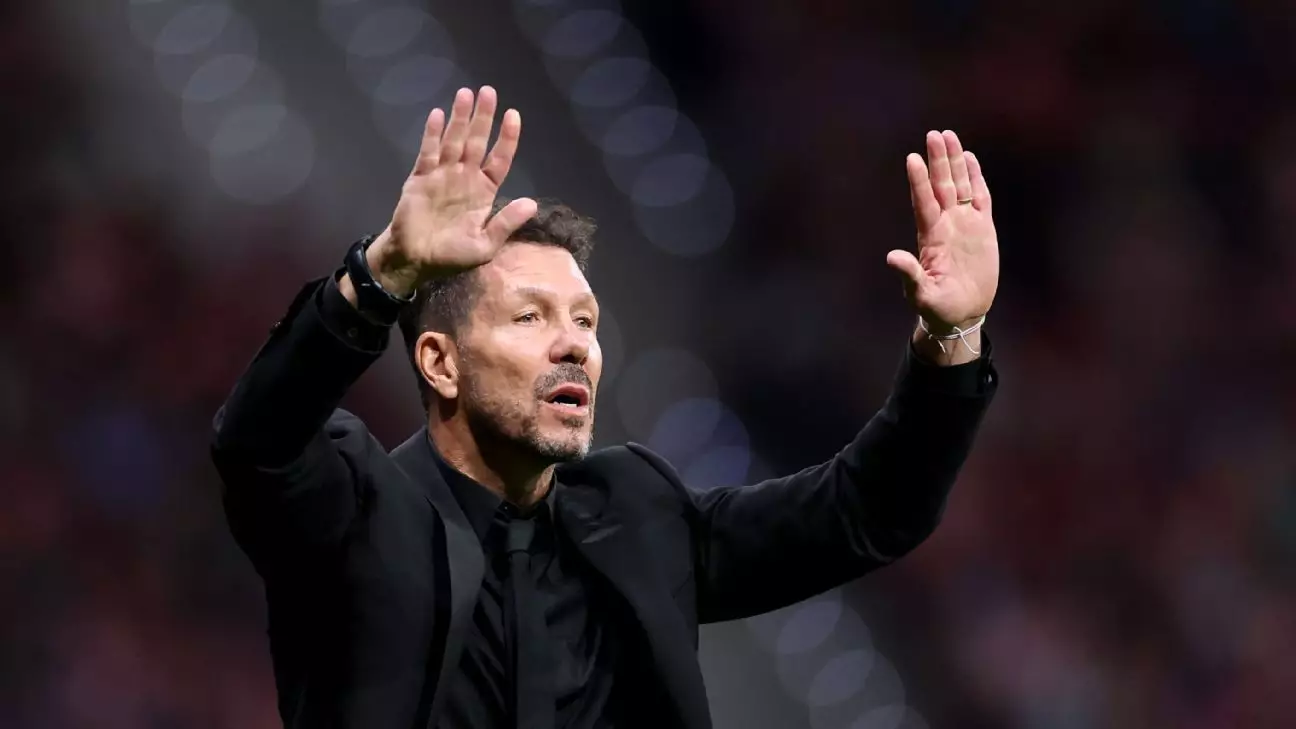The recent Madrid derby between Atlético Madrid and Real Madrid provided yet another reminder of the volatility of football culture, especially when fan emotions run high. This article delves into the critical moments of the match, the responsibilities of players and fans alike, and the implications of such incidents for the sport as a whole.
In a highly charged atmosphere typical of a Madrid derby, the match was abruptly brought to a halt in the second half after objects, including lighters and plastic bottles, were hurled onto the pitch. The situation escalated following Real Madrid’s Éder Militão scoring the opening goal, placing Atlético under immediate pressure. While the significance of sporting rivalry cannot be understated, this incident raises questions about the integrity and safety within football stadiums. The on-field behavior of players, especially in high-stakes games, undoubtedly influences the crowd.
Atlético’s coach, Diego Simeone, made headlines when he admonished fans for their actions while subtly criticizing Real Madrid’s goalkeeper, Thibaut Courtois, for what he perceived as provocative celebrations. This commentary opens up a broader discussion regarding how athletes’ conduct can ignite tensions among passionate supporters, underscoring the need for emotional restraint from both sides.
Simeone’s remarks highlight an essential dichotomy in football: the line between celebrating achievements and igniting fan discontent. Players often signal to the crowd and engage in celebratory gestures that can provoke extreme reactions from rival fans. Acknowledging this relationship is crucial, as it places a degree of responsibility on the athletes involved. They are not mere performers; they are integral to the matchday environment that can either foster positivity or breed hostility.
The post-match statements from Simeone reflect a growing awareness among coaches and players about their roles within the broader ecosystem of football culture. By advocating for more cautious celebrations—especially in such a heated atmosphere—Simeone reinforces the notion that players must consider the potential repercussions of their actions. It is not merely a matter of sportsmanship; it relates to the safety and experience of all attendees.
The decisions and directions of fans in stadiums are influenced by their emotions, the atmosphere, and the events happening on the pitch. However, throwing objects onto the field is a clear breach of safety protocols and a reflection of poor sportsmanship. Simeone’s insistence on prioritizing team wellbeing over momentary frustrations speaks to the need for dialogue within fan communities. Acknowledging that their actions can endanger players and disrupt the game should resonate deeply among supporters.
Following the incident, Atlético Madrid quickly responded with a statement emphasizing their commitment to identifying and holding accountable those responsible for the disturbances. This reaction is crucial not only for maintaining order within their stadium but also for cementing the club’s commitment to a safe and inclusive environment for all supporters. It’s essential that clubs take a stand against such behaviors, as they tarnish the reputation of devoted fans who demonstrate respect and passion for the game.
Compounding the issues of violence and disregard for safety is an emerging trend of racism within football fan culture. Just a day prior to the derby, reports surfaced regarding a social media campaign that sought to normalize racist acts against a player—Vinícius Jr.—encouraging Atlético fans to mask their identities while engaging in such behavior. This abhorrent initiative emphasizes the darker aspects of fandom, where racial intolerance is cloaked under the guise of rivalry.
Football clubs, leagues, and organizations must acknowledge these issues seriously to ensure that such incidents do not become the norm. Engaging in meaningful conversations surrounding race and acceptance is essential for the evolution of football culture. As fans seek to hold their teams accountable for violence in the stands, clubs must reciprocate by prioritizing community engagement and anti-racism education.
The chaotic scenes witnessed during the Madrid derby serve as a clarion call for all stakeholders—players, coaches, clubs, and fans—to reflect on their roles and responsibilities within the sport. Creating an inclusive environment that fosters passion without violence requires collective efforts from everyone involved.
Players must demonstrate leadership both on and off the pitch, understanding their influence on fan behavior. At the same time, fans should engage in self-policing and uphold a culture of respect, turning attention from hostility to support. The path forward is illuminated by cooperation and communication, paving the way for a more vibrant and safe football experience for all.
Ultimately, the Madrid derby must not only be remembered for the on-field drama but also for the lessons learned on the responsibilities inherent in the world of football. Only through commitment and change can the integrity of the sport be preserved for generations to come.


Leave a Reply